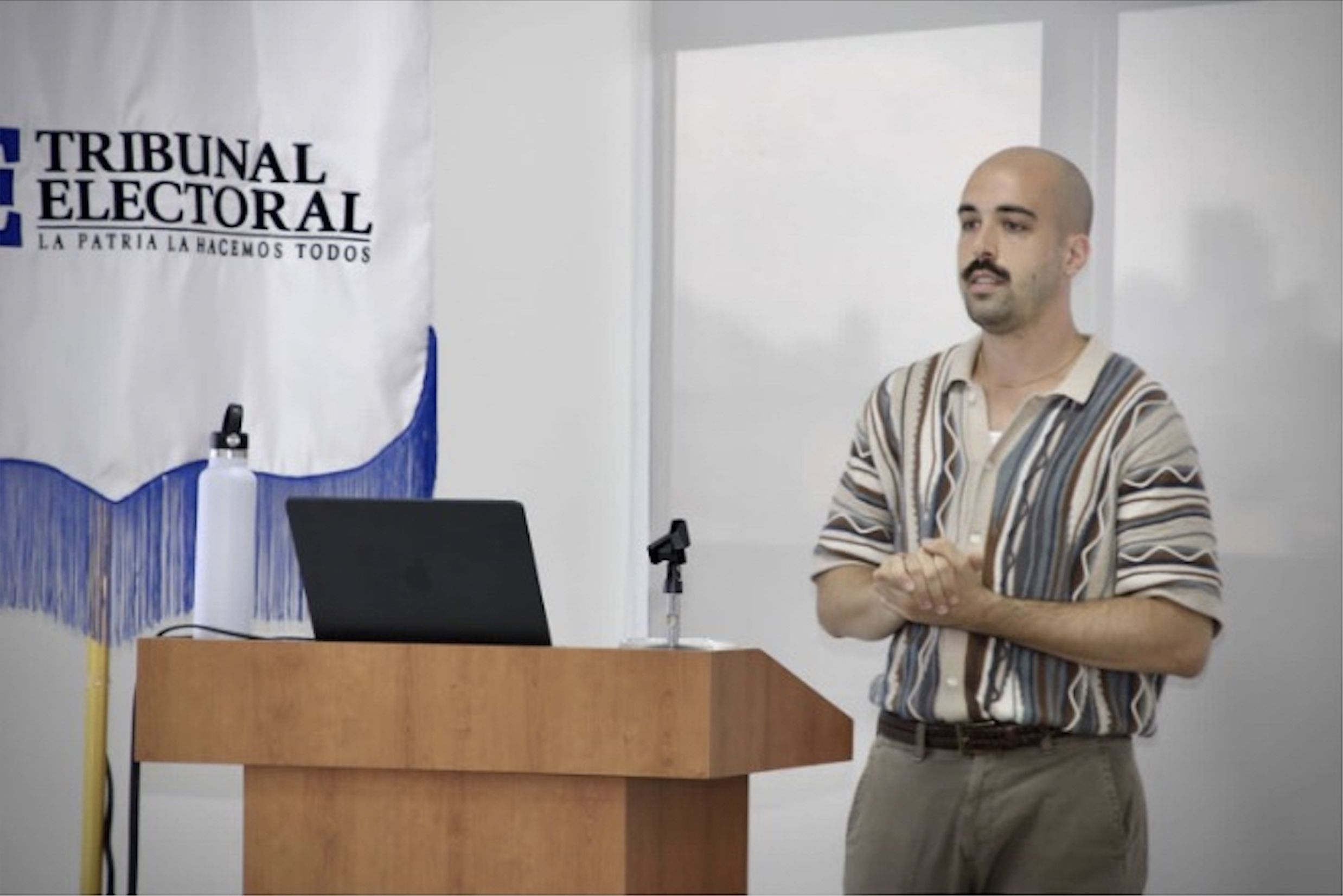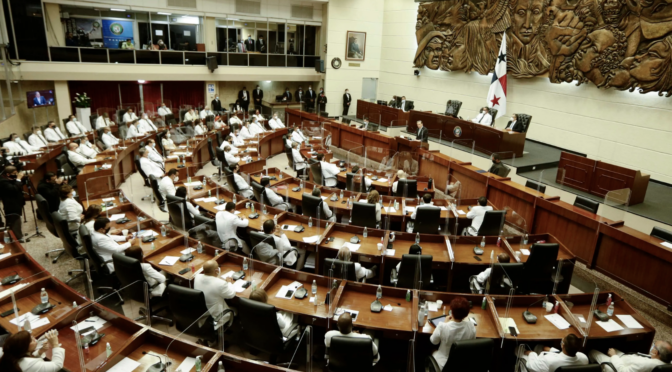By Matt Martin, PhD student in the UT Government Department
The time I’ve spent in Panama has been nothing short of a privilege. To work alongside International IDEA and have a peek into the world of democratic and electoral assistance was invaluable, both on a professional and personal level. Most of my time was spent at the Tribunal Electoral (“Electoral Tribunal,” or TE), where International IDEA-Panama is located. The TE houses not only the country’s civil registry, national ID directorate, and specialized electoral body but also the Instituto de Estudios Democráticos (“Institute of Democratic Studies,” or INED). I worked alongside the director of INED, Salvador Sánchez, and several other researchers on his talented team. Their kindheartedness made me feel more than welcome as an intern.
I had two primary tasks to which I dedicated my energy. First, I was given the opportunity to prepare a presentation for INED and some members of the Centro Internacional de Estudios Políticos y Sociales (“International Center of Political and Social Studies,” or CIEPS). I presented a working paper written by me and a group of co-investigators at the Comparative Constitutions Project (CCP). The paper—“What kind of constitution do people want?”—outlines a new methodology for analyzing public consultation data using advanced natural language processing tools. During my presentation, I discussed how these tools could be extended to other tasks such as analyzing public questions and comments received by the Electoral Tribunal.


Second, I had the chance to read and comment on a book drafted by several researchers at INED and IDEA. This ambitious project seeks to evaluate the performance of Panama’s constitution using a methodological framework developed by Dr. Tom Ginsburg, senior technical adviser to IDEA. I learned a great deal about Panama’s constitutional system from the authors’ thorough analyses and expertise. On the day I provided my comments to the authors, I was joined by Dr. Jorge Silvero, lawyer and professor of constitutional law in Paraguay. Together we engaged in a constructive discussion with several of the book’s authors, offering our suggestions on how to best move forward. At the end of the conference, I received an honorary certificate for my collaboration with INED—a thoughtful parting gift. Some of the researchers and I continue to share ideas as the team finishes the book.
Apart from these rewarding projects, the INED-IDEA team was kind enough to organize several events that allowed the other interns and I to learn about Panama’s democracy and institutions. We traveled to three important locations: the Biblioteca Nacional (“National Library”), Ciudad del Saber (“City of Knowledge”), and Archivo Nacional (“National Archives”). At the first, we saw centuries-old Panamanian books being restored and early 1900s Panamanian music being digitized. At the second location, we visited the CIEPS office, housed in the old barracks of what was once United States Army South headquarters, Fort Clayton. We had the chance to meet the entire team and hear about the many projects that they have in the works. On the final trip, we were able to see some of the oldest government documents in Panama’s possession, including some dating back to the 1600s during the era of Spanish colonialism. All of these trips were deeply gratifying, as they gave us an opportunity to learn more about the history, politics, and culture of our host country.
Outside of work, the other fellows and I took full advantage of our time in Panama to see some of the most beautiful parts of the country. One Sunday we spent a day swimming at Taboga Island, also known as the “Island of Flowers,” a volcanic island off the Pacific coast of Panama. The weather was perfect, and the tropical environment picturesque. Perhaps my favorite trip, however, was the two days we spent in the San Blas Islands, an archipelago of some 365 islands off the northern coast of Panama. These are part of the Comarca Guna Yala (“Guna Yala Region”), home to the indigenous people known as the Gunas. During our trip, we heard the stories of how the Guna people won greater cultural and political autonomy from the Panamanian state following the “Tule Revolution” in 1925. We also took a tour to several islands throughout the archipelago, seeing how these communities go about their lives alongside the high levels of tourism. Yet despite all the activity during the daytime, the island where we stayed was quiet. By sundown, the other tourists had departed, and our group was left to enjoy the tiny island—near total silence, only the light of the moon reflecting on the ocean water. There was an air of serenity I will never forget.

Though my time in Panama has come to a close, I am beyond grateful for the experiences I have had. Most importantly, my relationship with the IDEA-Panama team continues to bear fruit. Prior to my departure, we started discussions about organizing public consultations centered on constitutional issues in partnership with the Comparative Constitutions Project. We plan to work together with IDEA and their partners in Panama and beyond to assemble a series of focus groups using CCP’s new deliberative consultation approach. Our goal is to have participants use the information on Constitute to foster civic discussion of constitutional issues, in a way that is more scalable than other time- and cost-intensive deliberative efforts in the past. I look forward to collaborating with IDEA on this promising project.
Today, I find myself in another International IDEA office—this time in Santiago de Chile. For the next three weeks, I will be working with the IDEA-Chile team on a project named Apoyo al congreso (“Support for congress”). The other fellows and I are responsible for constructing a database of current and pending laws, as well as news reports, that focus on a variety of themes—from renewable energy to civic participation to gender (my assigned topic). The overarching goal is to provide a picture of the current state of institutional development in Chile, which will be used to inform the government’s discussions and exchange with officials from the European Union that are currently underway.
On a personal level, I am already growing to love Santiago. My apartment is located in Providencia—only five metro stops from the IDEA office. I find myself surrounded by a variety of massive parks that I have enjoyed exploring. The other day alone I walked some seven miles, exploring nearby neighborhoods and public spaces as well as absorbing the mesmerizing graffiti covering many buildings. The crisp winter weather is also a nice reprieve from the intense Panama heat and humidity. I am excited to see what the rest of my experience has in store for me. ¡Adelante!
